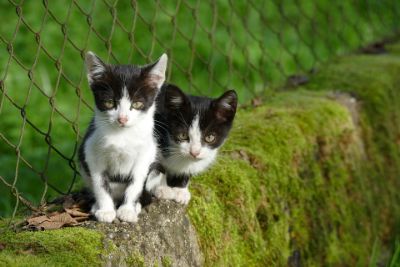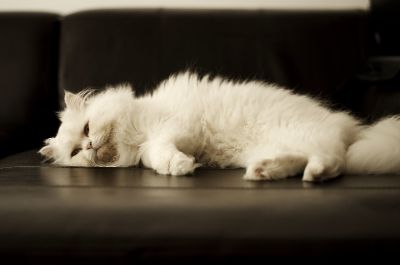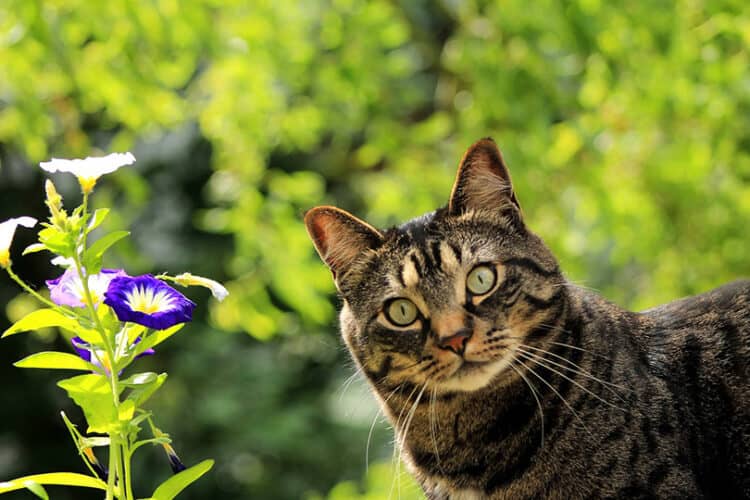Frontiers in Veterinary Science, an online animal behavior and welfare publication, has reported that a 2019 study finds that cats and their owners both enjoy an enhanced quality of life when cats are allowed safe, secure access to the outdoors. The study included a survey of 446 cat owners who had purchased a ProtectaPet® product such as a catio, fence, or barrier. These products are designed to give cats a safe way to experience the great outdoors while keeping them protected from predators, car traffic, other neighborhood cats, and other potential dangers.

The study took place in the UK, where it is common for cats to be allowed outdoors for part of the day. People who allow their cats to roam freely without concern for their safety probably did not purchase these products and would not have likely taken part in the study. In general, the cat owners who participated had concerns about keeping their cats outdoors, but once they had a catio or other safe enclosure, they felt more comfortable letting their cats out.
The study showed that while nearly half of the cats had previously spent an hour or less outdoors each day, over two-thirds were able to spend between three and seven hours outside after their owners purchased a ProtectaPet® containment system.
The results showed that cats who had previously been allowed outdoors without being contained enjoyed better health once they had a secure place to be in their yards because they did not get into fights or have the stress of seeing other cats. Cats who had previously been kept indoors and were now allowed outside in their containment systems were less likely to exhibit problematic behaviors like soiling indoors, waking their owners at night, and being irritable.
In the United States, approximately 70 percent of pet cats live indoors only. Another 25 percent have indoor and outdoor access, and only 5 percent live outdoors exclusively. Cats who live outdoors have a shorter lifespan than indoor-only cats. Outdoor cats live an average of two to five years, while indoor-only cats live an average of 10 to 15 years. The reasons that outdoor cats have shorter lifespans are many: They can be hit by cars, get injured in a fight with a neighborhood cat or another animal, contract deadly diseases from other animals, become poisoned by rat poison or other toxic substances that they find, or harmed by people who have bad intentions. Unaltered cats left outdoors can also get pregnant or impregnate other cats, leading to unwanted kittens.

Indoor cats, however, sometimes exhibit behaviors that cause their owners stress. For example, they might scratch the furniture, soil outside of the litterbox, show aggression to other pets in the household, chew on cords, and otherwise annoy the people and fellow pets they live with. This can lead to cat owners wanting to put their cats outside. With a safe enclosure such as a catio or securely fenced yard, the cats can enjoy spending time in the sun and fresh air while seeing insects, birds, squirrels, and other small creatures. This can inhibit their frustrating behaviors. Knowing that their cat is safe while outside can also alleviate any anxiety that the cat-owner might have regarding having an outdoor cat.
Cat owners who want to keep their kitties outdoors in a safe place might consider purchasing a containment system. It’s also possible to make one, either with a kit that can be purchased or with materials from a home improvement store. Vinyl privacy fences that are at least six feet high can usually keep a cat inside, but if there are bushes, trees, a grill, an outdoor table, or other structures or natural elements nearby, a cat can use those as a launching pad to get over the fence. Cats can easily climb chain-link fences as well as some wooden fences. They can also fit through gaps at the bottom or at the gates. There are products that can be retrofitted to the top of a fence to prevent a cat from climbing over, though if there are trees in the yard, then it’s still possible for cats to get out, so cat owners should assess the property for those types of hazards.
Since cats and their owners both seem happier when the cats are allowed access to the outdoors, it is wise for cat-owners to look for safe, secure ways for their companions to spend time in the yard or garden on a regular basis. An outdoor cat enclosure can give cats the freedom and stimulation they need for good mental health while keeping them out of the road or away from potentially dangerous wild animals.
Featured Photo Courtesy: Pixabay.







